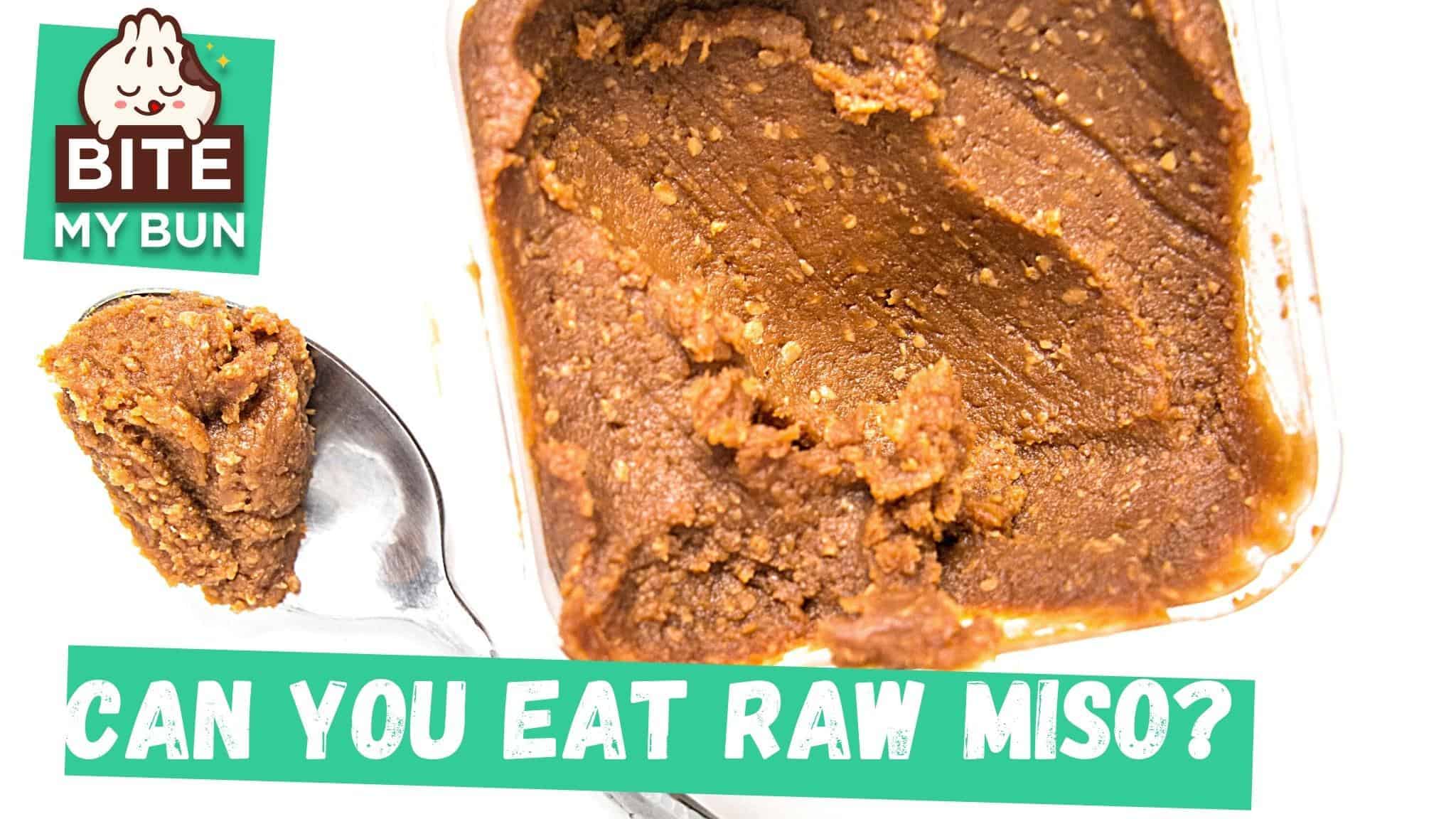Can you eat miso raw without cooking it?
Miso looks a bit like the last of the peanut butter in a jar. You know, the ones where the oil floats on top without all the preservatives. But can you eat it raw as well?
Yes, you can eat miso without cooking it. Though often eaten in hot dishes, you should avoid boiling it, and it can be used directly from the container and does not require further processing. It’s a simple fermented paste that adds an umami saltiness to everything from marinades to soups.
You can take a spoonful and put it in salads or sauces without prior cooking. So let’s look at how to use it best.

Since Miso is a cultured food, it’s best to add it to warm dishes after they finish cooking. Too much heat will kill the bacterial activity from the miso. It can be eaten raw and used directly or heated up at the last minute for soups.
It’s made from fermented soybean and grain and contains millions of beneficial bacteria. The duration of germination influences the flavor ranging between sweet and mild to salty and rich.
But boiling it will ruin all the good bacteria that make it such a healthy choice.
The only thing you’ll want to do when using it in a soup or sauce base is to dissolve it in a little hot water. This helps get the lumps out of your dishes. Just make sure the water isn’t boiling anymore.

Check out our new cookbook
Bitemybun's family recipes with complete meal planner and recipe guide.
Try it out for free with Kindle Unlimited:
Read for freeCold miso in salad dressings
Miso dressing is simply a good method of making your dish unique and impress your guests. You’ll love it.
It can just come out of the container so you may mix it up with the dressing you have just created without any cooking, just use the raw paste.
You can dress a simple green salad or roasted vegetable with a miso dressing.
Do you boil miso?
Miso paste is mostly a mixture made from cooked soybeans and fermented ingredients with salt and water. There are many color varieties of miso including ivory to deep chestnut.
The flavor varies from mild to rich, with white miso being the mildest because its main ingredient is rice with a small percentage of soya, not too strong and not too mild, so a great starting point for miso in your soup or salad.
But avoid boiling miso directly – it can spoil, and it’s one of the biggest mistakes beginners make when cooking with miso.
And if you want to know if you can substitute red or brown miso paste for white, check out this article where I explain it in detail.
Check out our new cookbook
Bitemybun's family recipes with complete meal planner and recipe guide.
Try it out for free with Kindle Unlimited:
Read for freeJoost Nusselder, the founder of Bite My Bun is a content marketer, dad and loves trying out new food with Japanese food at the heart of his passion, and together with his team he's been creating in-depth blog articles since 2016 to help loyal readers with recipes and cooking tips.
